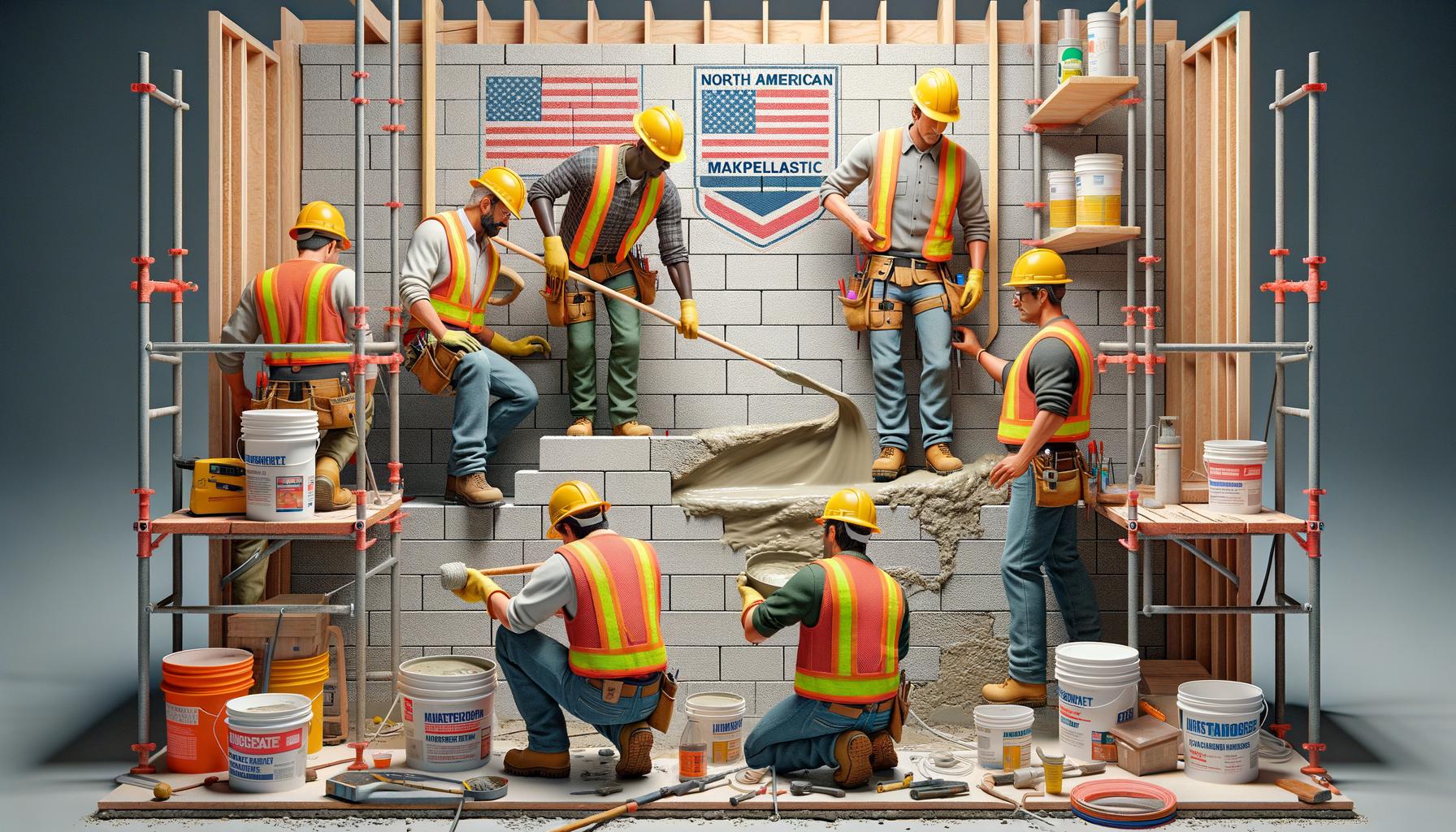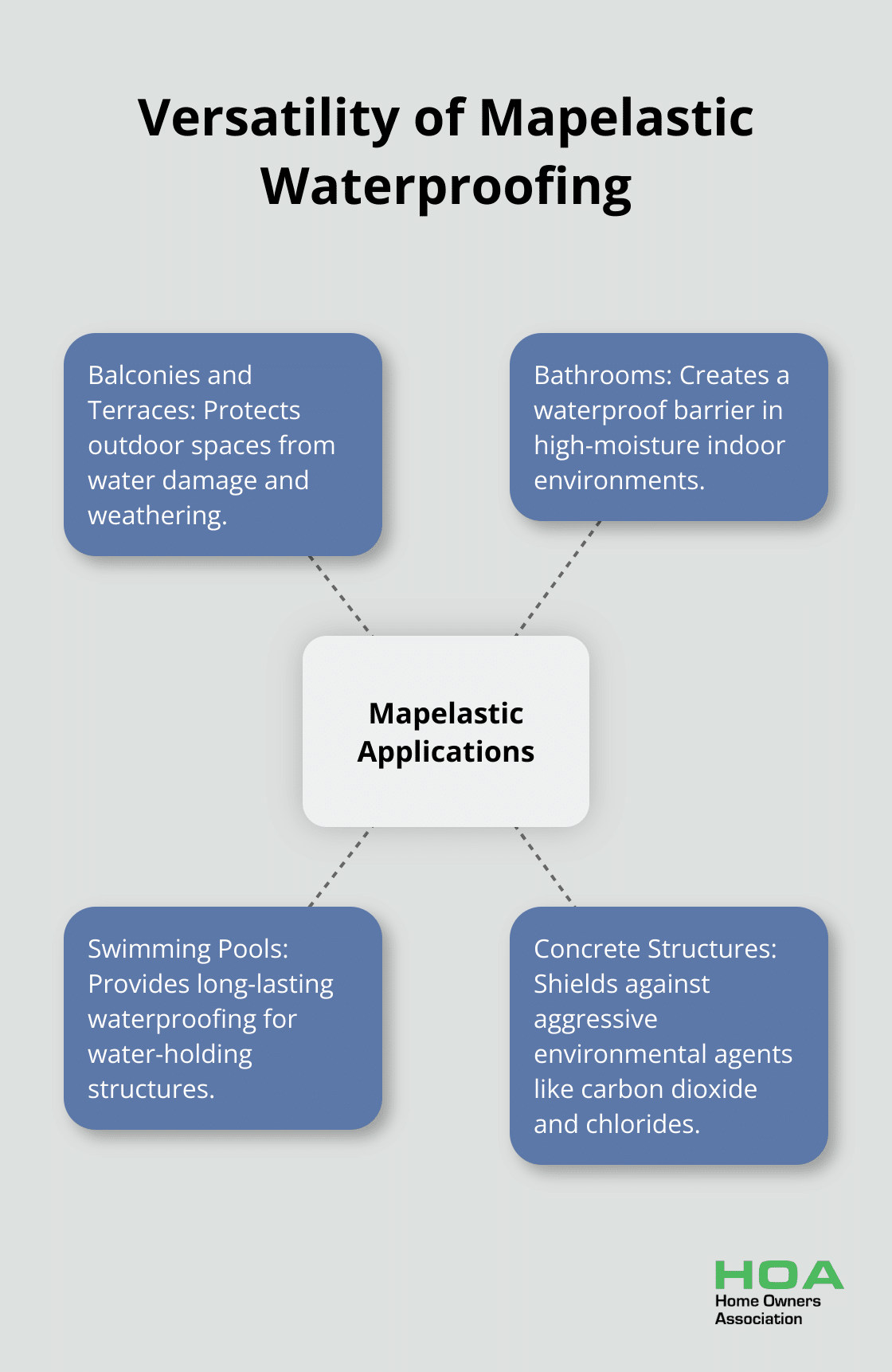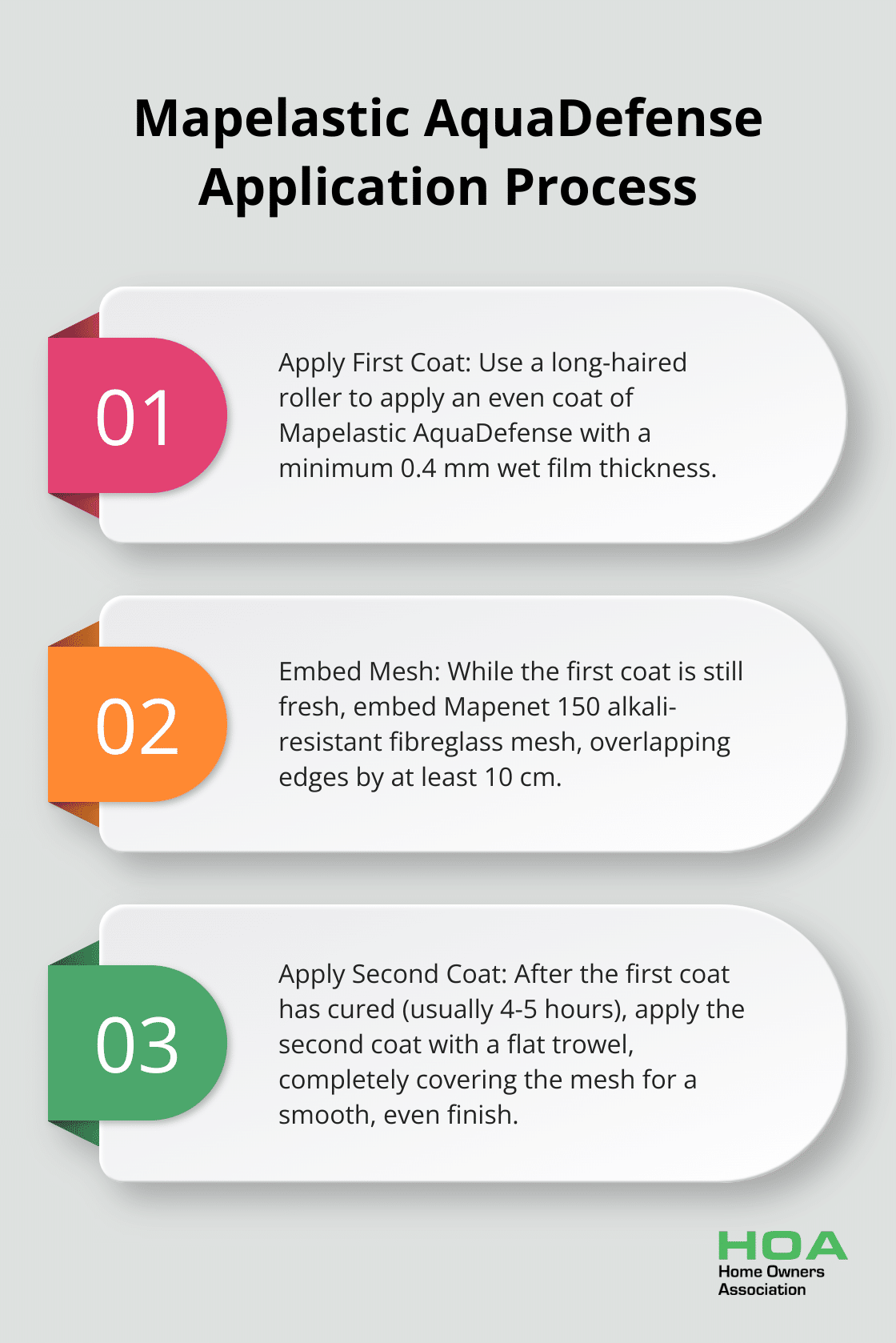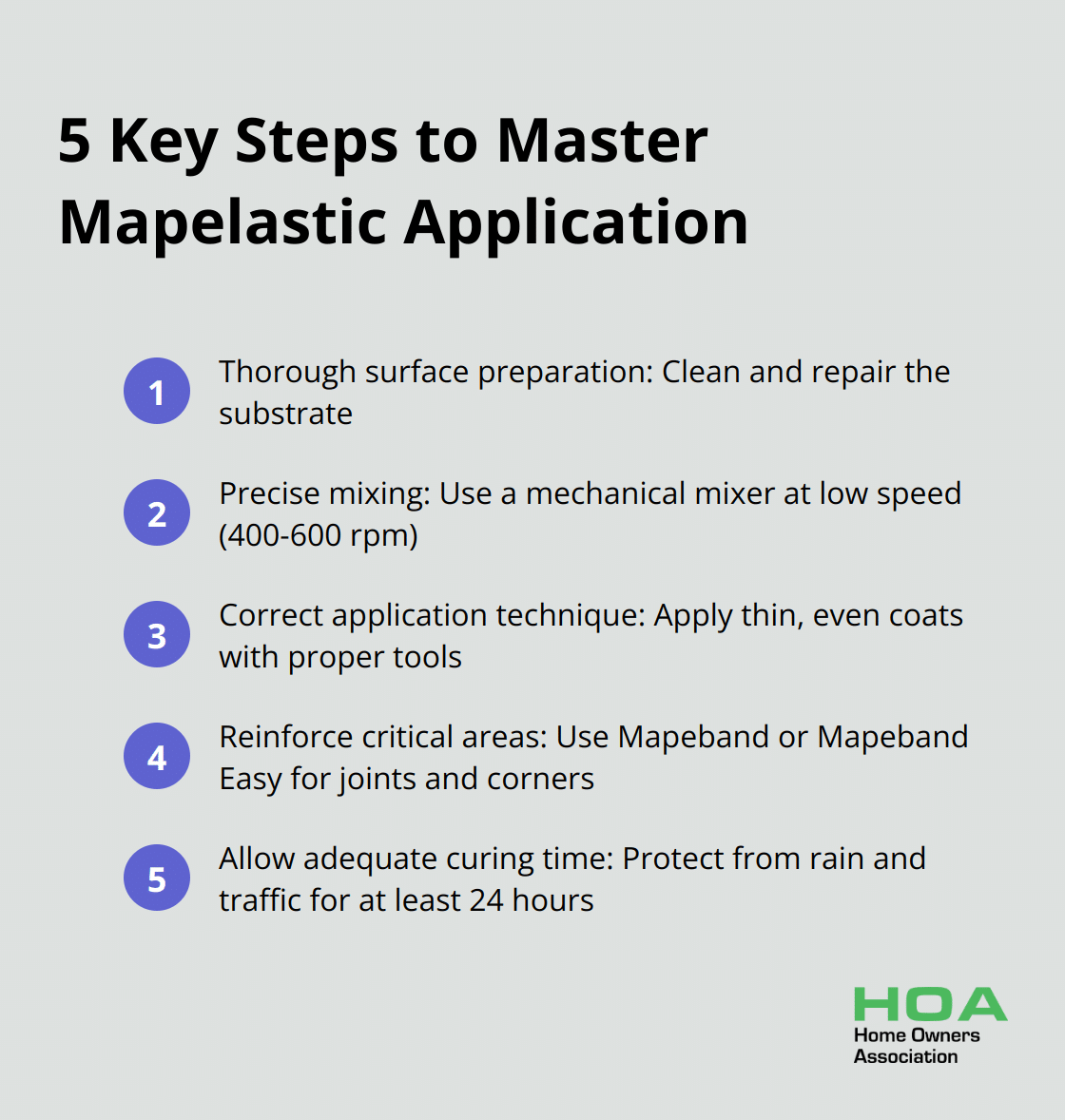
At Home Owners Association, we understand the importance of effective waterproofing for protecting your property.
Mapelastic waterproofing has emerged as a top solution for homeowners seeking reliable protection against moisture damage.
This innovative product offers superior performance and durability compared to traditional waterproofing methods.
In this guide, we’ll explore how to use Mapelastic effectively to safeguard your home from water-related issues.
What is Mapelastic?
Composition and Application
Mapelastic is a revolutionary waterproofing solution that protects homes from water damage. This two-component, flexible cementitious mortar creates a robust, impermeable barrier against moisture infiltration. It consists of a cement-based powder and a liquid polymer. When mixed, these components form a highly elastic membrane that adheres strongly to various surfaces. Professionals apply it using a trowel or roller, typically in two coats, to achieve optimal waterproofing results.
The product’s flexibility sets it apart. Mapelastic can bridge cracks in concrete, with its crack-bridging capacity determined by measuring the maximum width of the crack at the moment Mapelastic fractures. This elasticity allows Mapelastic to maintain its protective properties despite substrate movement (a common issue in buildings).
Versatility in Use
Mapelastic’s versatility stands out as one of its key features. It suits waterproofing for balconies, terraces, bathrooms, and swimming pools. Its effectiveness extends to protecting concrete structures from aggressive environmental agents (such as carbon dioxide and chlorides).

Performance and Durability
Mapelastic’s performance impresses with its capabilities. It withstands water pressure up to 5 bar for 3 days with no penetration, and 1.5 bar for 7 days with no penetration. It also demonstrates impermeability to water under 1.5 bar negative pressure with no penetration. This means it works effectively whether water pushes from above or below the treated surface.
The durability of Mapelastic deserves attention. When applied correctly, it lasts for years without degradation. This longevity makes it a cost-effective choice for homeowners who seek a long-term waterproofing solution.
Environmental Considerations
Environmentally conscious homeowners will appreciate Mapelastic’s additional advantage. As a low-VOC product, it emits fewer harmful chemicals during and after application. This makes it safer for both applicators and residents.
Mapelastic’s combination of flexibility, durability, and eco-friendliness distinguishes it in the waterproofing market. Its ability to protect against various types of water damage while adapting to structural movements makes it an excellent choice for Australian homes facing diverse climate conditions.
Now that we understand what Mapelastic is and its benefits, let’s explore how to prepare surfaces and apply this innovative waterproofing solution effectively.
How to Apply Mapelastic Effectively
Surface Preparation
Proper surface preparation is essential for Mapelastic application. Surfaces should be clean and free of dust, oil, grease, paint, tar, wax, curing agent, primer, sealer, concrete colour stains, and old adhesive residues. Repair cracks or damaged areas with a suitable MAPEI repair mortar. For concrete surfaces, ensure they are at least 28 days old with a moisture content below 4%.
Dampen the surface with water, but avoid standing water. This prevents rapid drying of the Mapelastic, which can affect its performance. For smooth or non-absorbent surfaces, apply MAPEI Primer 3296 to improve adhesion.
Mixing Mapelastic
Correct mixing of Mapelastic is vital for its effectiveness. Pour the liquid component (Part B) into a clean container, then gradually add the powder component (Part A) while mixing with a low-speed drill fitted with a mixing paddle. Mix for about 3 minutes until you achieve a smooth, lump-free consistency. Let the mixture stand for 5 minutes, then briefly remix before application.
The mixing ratio is typically 3 parts powder to 1 part liquid by weight. Always refer to the latest product data sheet for the most up-to-date mixing instructions.
Application Process
Mapelastic AquaDefense must be applied in two even coats (minimum 0.4 mm wet film thickness per coat) with a long-haired roller. While the first coat is still fresh, embed Mapenet 150 alkali-resistant fibreglass mesh into it, overlapping the edges by at least 10 cm.
After the first coat has cured (usually 4-5 hours), apply the second coat with a flat trowel, completely covering the mesh. Ensure the second coat is smooth and even. For areas subject to movement or cracking, consider using Mapetex Sel non-woven polypropylene fabric instead of the fibreglass mesh.
Pay special attention to corners, edges, and joints. Use Mapeband TPE or Mapeband SA to reinforce these areas for extra protection against water infiltration.

Curing and Protection
Mapelastic requires proper curing to achieve its full waterproofing potential. In normal conditions (around 20°C), protect the applied Mapelastic from rain and accidental water contact for at least 24 hours. In colder temperatures, extend this protection period to 4-5 days.
For swimming pools and water features, wait at least 5 days before filling with water. If you’re tiling over Mapelastic, allow it to cure for 4-5 days before proceeding with tile installation.
These curing times can vary depending on temperature and humidity. In hot or windy conditions, you might need to mist the surface with water to prevent premature drying.
Proper application of Mapelastic is key to achieving optimal waterproofing results. The next section will explore best practices and common mistakes to avoid during the Mapelastic application process, ensuring you get the most out of this innovative waterproofing solution.
Mastering Mapelastic Application
Precision in Preparation and Mixing
Surface preparation is a critical step in Mapelastic application. Clean the substrate thoroughly and ensure proper curing. For concrete surfaces, wait at least 28 days before application. (Consult a professional for newer surfaces to determine readiness.)
Mix Mapelastic to the right consistency using a mechanical mixer at low speed (400-600 rpm) to avoid air entrapment. Prepare only the amount you can apply within 60 minutes at 23°C. In warmer conditions, the working time decreases, so plan accordingly.

Application Techniques for Optimal Coverage
Mapelastic application can be done using a low-pressure spray gun. Apply at a maximum thickness of 80 mils per coat. Maintain a wet edge when applying Mapelastic to ensure seamless coverage. Overlap each pass by about 50% to avoid thin spots or missed areas. For vertical surfaces, start from the bottom and work upwards to prevent sagging.
Use a notched trowel for the first coat, followed by a flat trowel to smooth the surface. This technique helps achieve the recommended thickness. Two thin coats provide better waterproofing performance than one thick coat.
Reinforcement and Detail Work
Focus extra attention on corners, joints, and transitions. These areas are prone to movement and require additional reinforcement. Use Mapeband or Mapeband Easy to reinforce these critical zones. Press the reinforcement into the first coat of Mapelastic while it’s still fresh, then cover with a second coat.
For large areas or surfaces subject to movement, incorporate Mapetex Sel fabric into the entire application. This improves the membrane’s ability to bridge cracks and withstand structural movement.
Curing and Protection
Proper curing allows Mapelastic to reach its full potential. Protect the application from rain and foot traffic for at least 24 hours after application. In cooler temperatures or high humidity, extend this protection period to 5 days.
For swimming pools or water features, wait at least 28 days before filling with water. This extended curing time ensures that the Mapelastic membrane fully develops its waterproofing properties.
Long-Term Maintenance
Conduct annual inspections to maintain the effectiveness of your Mapelastic waterproofing. Look for any signs of wear, particularly in high-stress areas like corners and joints. Address any damage promptly to prevent water infiltration.
Clean the waterproofed surface regularly with a mild detergent solution. Avoid harsh chemicals or abrasive cleaning tools that could damage the membrane. If you notice any changes in the surface texture or colour, consult a professional for assessment.
Professional installation often yields the best results, especially for complex or large-scale projects. Home Owners Association provides guidance and connects you with trusted professionals for your waterproofing needs.
Final Thoughts
Mapelastic waterproofing offers superior protection against moisture-related issues in homes. Its unique composition and flexibility make it ideal for various applications, from bathrooms to swimming pools. The product’s ability to bridge cracks and resist water pressure distinguishes it in the waterproofing market.
Proper application maximizes Mapelastic’s benefits. Careful surface preparation, precise mixing, and correct application techniques ensure optimal results. Reinforcing critical areas and allowing adequate curing time (which varies depending on conditions) provide long-lasting protection against water infiltration.
Mapelastic’s durability and resistance to environmental factors result in fewer repairs and replacements over time. This translates to cost savings and peace of mind for homeowners. For expert guidance on waterproofing projects, the Home Owners Association offers valuable resources and support to Melbourne homeowners.





